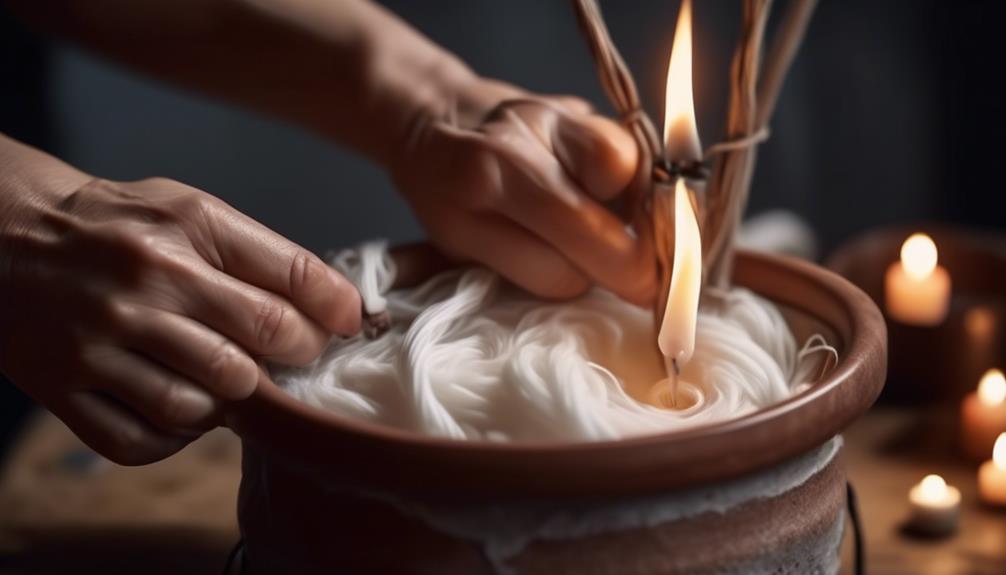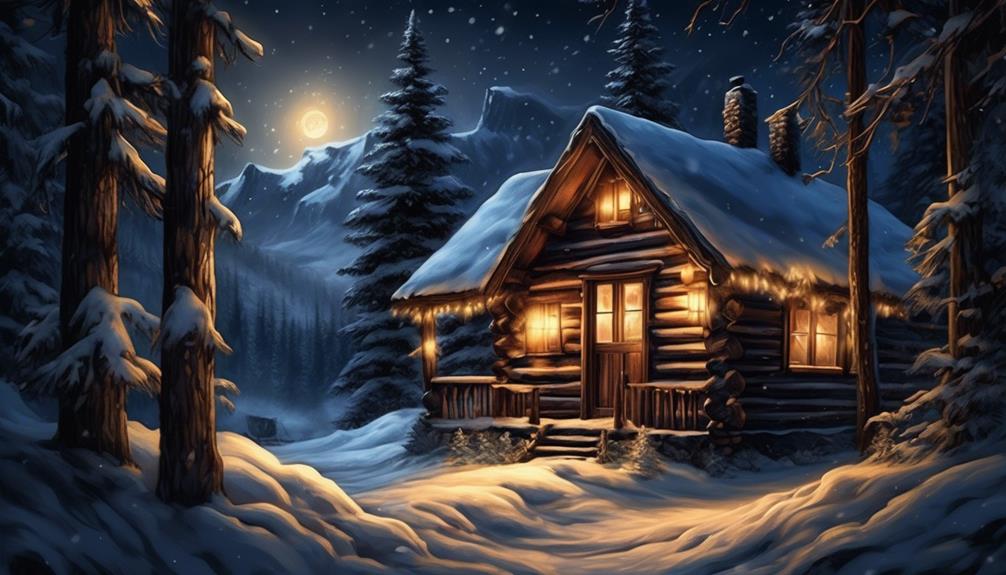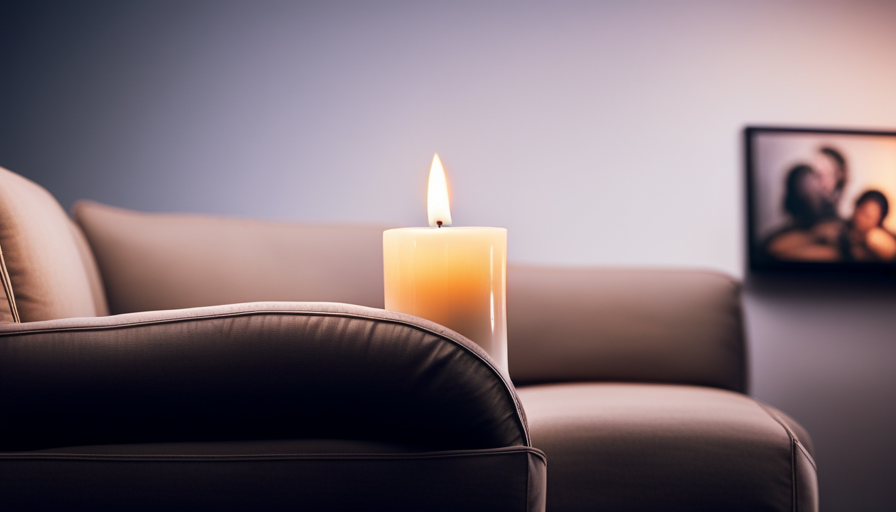Understanding the right time to pour candle wax is essential for crafting the perfect candle. Despite any skepticism about the significance of timing in the wax pouring process, it remains a crucial skill for candle makers striving for excellence.
By carefully considering the temperature at which we pour our wax, we can ensure optimal results and create candles of superior quality. In this guide, we will explore the ideal temperature for pouring, the factors that can affect it, and methods for testing wax consistency.
With our expertise, you will gain the knowledge needed to confidently pour candle wax and enhance your candle-making skills.
Key Takeaways
- The ideal pouring temperature is crucial for achieving optimal results in candle making.
- Factors such as wax type, desired finish, and ambient temperature impact the ideal pouring temperature.
- Wax melting point and ambient room temperature play a significant role in determining the pouring temperature.
- Testing wax consistency is essential for determining the right pouring temperature and ensuring a smooth and even finish.
Importance of Temperature
To ensure the perfect candle, we must understand the importance of temperature when pouring candle wax. The ideal pouring temperature plays a crucial role in achieving optimal results. When the wax is too hot, it can cause the fragrance to evaporate or the color to fade. On the other hand, if the wax is too cool, it may not fill the mold evenly, resulting in uneven burning or surface imperfections.
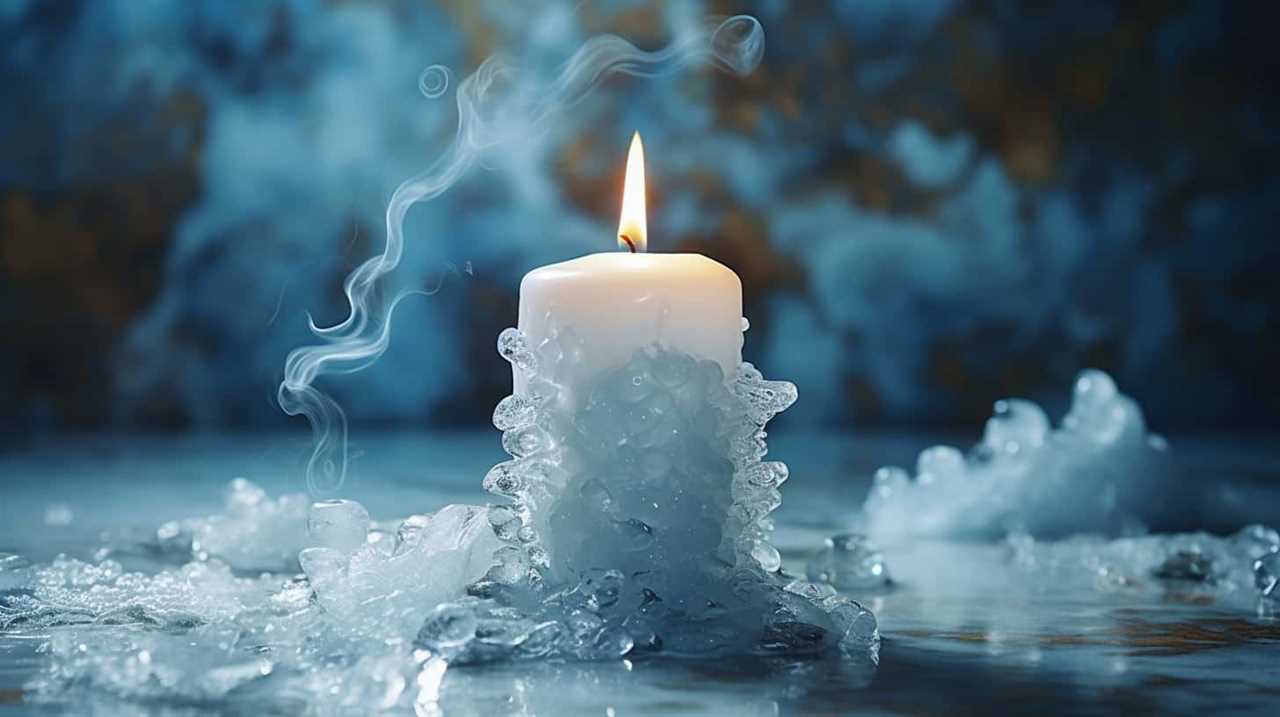
To determine the ideal pouring temperature, it’s essential to test the wax consistency. This can be done by dipping a spoon into the melted wax and observing how it runs off. The wax should have a smooth and steady flow, indicating that it’s at the right temperature for pouring.
Transitioning into the subsequent section about the ‘ideal temperature for pouring’, we’ll explore specific temperature ranges that yield the best results.
Ideal Temperature for Pouring
We have determined that the ideal pouring temperature for candle wax is crucial in achieving optimal results. The temperature at which you pour your wax can greatly affect its consistency and overall quality. Factors such as the type of wax, desired finish, and ambient temperature can all impact the ideal pouring temperature. To help you understand the importance of temperature in candle making, here is a table outlining the factors that affect consistency and the recommended pouring temperatures for different types of wax:
| Factors Affecting Consistency | Recommended Pouring Temperature (°F) |
|---|---|
| Type of Wax | 120-150 |
| Desired Finish | 150-180 |
| Ambient Temperature | 70-80 |
Testing pouring techniques at different temperatures can help you determine the best temperature for your specific candle making process. By paying attention to these factors and experimenting with different pouring temperatures, you can ensure that your candles have a smooth and even finish.
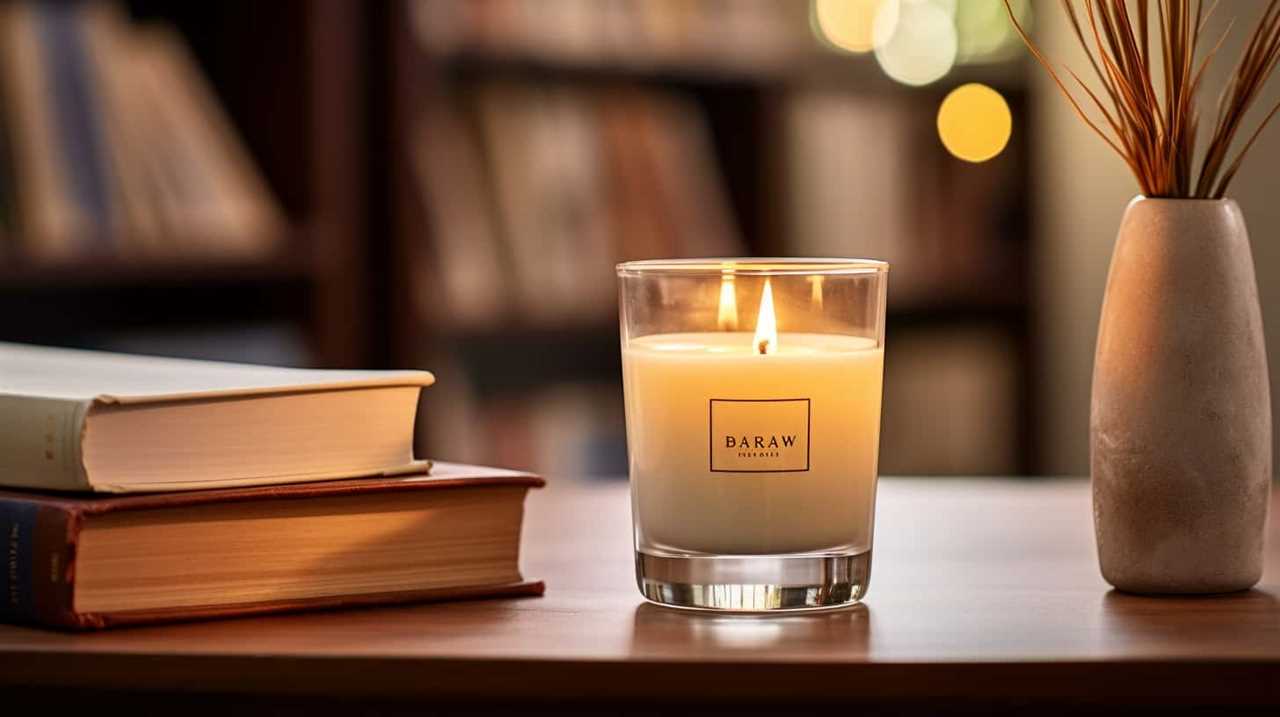
Factors Affecting Pouring Temperature
When it comes to pouring candle wax, there are several factors that can affect the pouring temperature.
One important factor is the wax melting point, as different types of wax have different melting points.
Another factor to consider is the ambient room temperature, as a colder room may require a higher pouring temperature to ensure proper adhesion and smoothness.
Lastly, the desired candle consistency also plays a role, as a softer consistency may require a lower pouring temperature to prevent cracking or sinking.
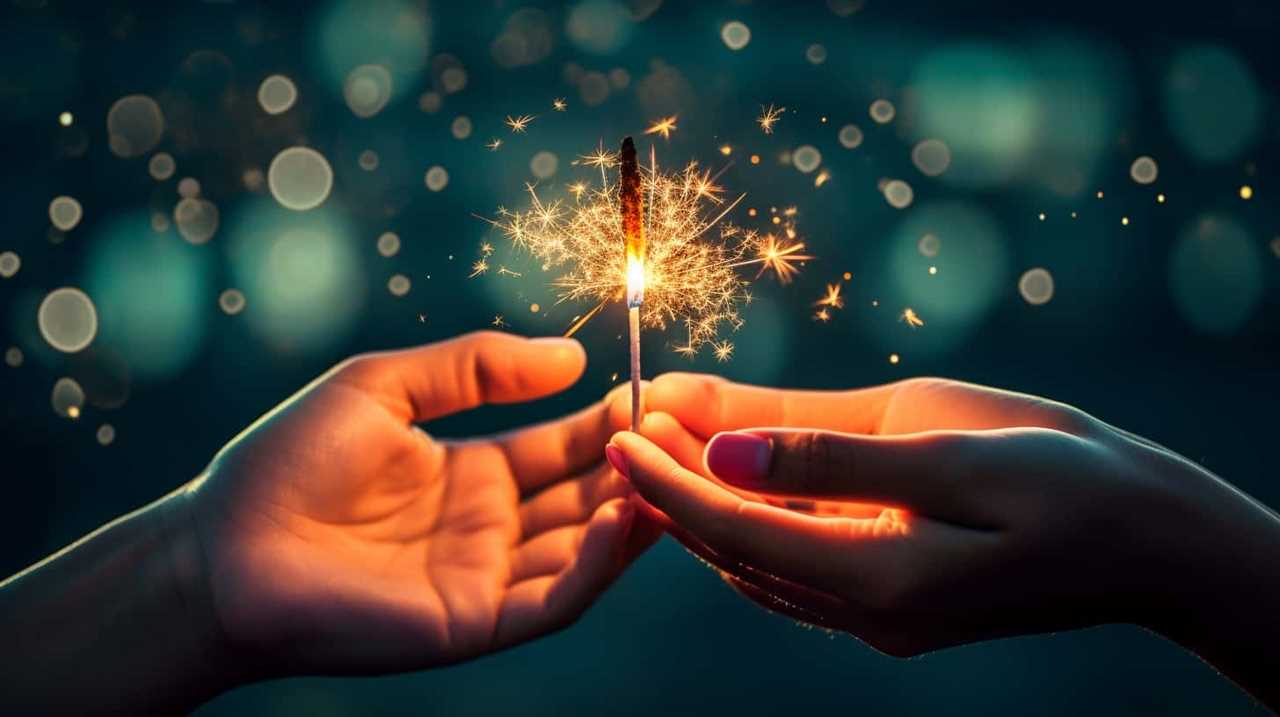
Considering these factors is crucial for achieving the desired results when pouring candle wax.
Wax Melting Point
One important factor that affects the pouring temperature of candle wax is the melting point of the wax. The melting point is the temperature at which the wax changes from a solid to a liquid state. Understanding the melting point significance is crucial for achieving the ideal pouring temperature for your candles.
Here are five factors that can influence the melting point of candle wax:
- Wax Type: Different types of wax, such as paraffin, soy, and beeswax, have different melting points.
- Additives: The addition of fragrance oils, colorants, or other additives can alter the melting point of the wax.
- Container Size: The size and shape of the container can affect the rate of heat transfer, thereby influencing the melting point.
- Heating Method: The method used to heat the wax, whether it’s a double boiler or microwave, can impact the melting point.
- Ambient Temperature: The surrounding environment temperature can affect the melting point of the wax.
Ambient Room Temperature
Considering the impact of ambient room temperature is essential in determining the pouring temperature for candle wax. The ideal pouring temperature is typically recommended by candle-making experts and varies depending on the type of wax being used.

Room temperature has a significant effect on the pouring temperature of candle wax. If the room is too cold, the wax may solidify too quickly, resulting in uneven and bumpy surfaces. On the other hand, if the room is too warm, the wax may take longer to cool and harden, potentially causing shrinkage and cracking.
It’s crucial to maintain a consistent room temperature when pouring candle wax to achieve the desired candle consistency.
Transitioning into the subsequent section about ‘desired candle consistency’, let’s now explore how pouring temperature affects the overall quality of the candle.
Desired Candle Consistency
To achieve the desired candle consistency, we need to take into account the factors that affect the pouring temperature. Factors influencing consistency play a crucial role in achieving the desired results. Here are five key factors to consider:
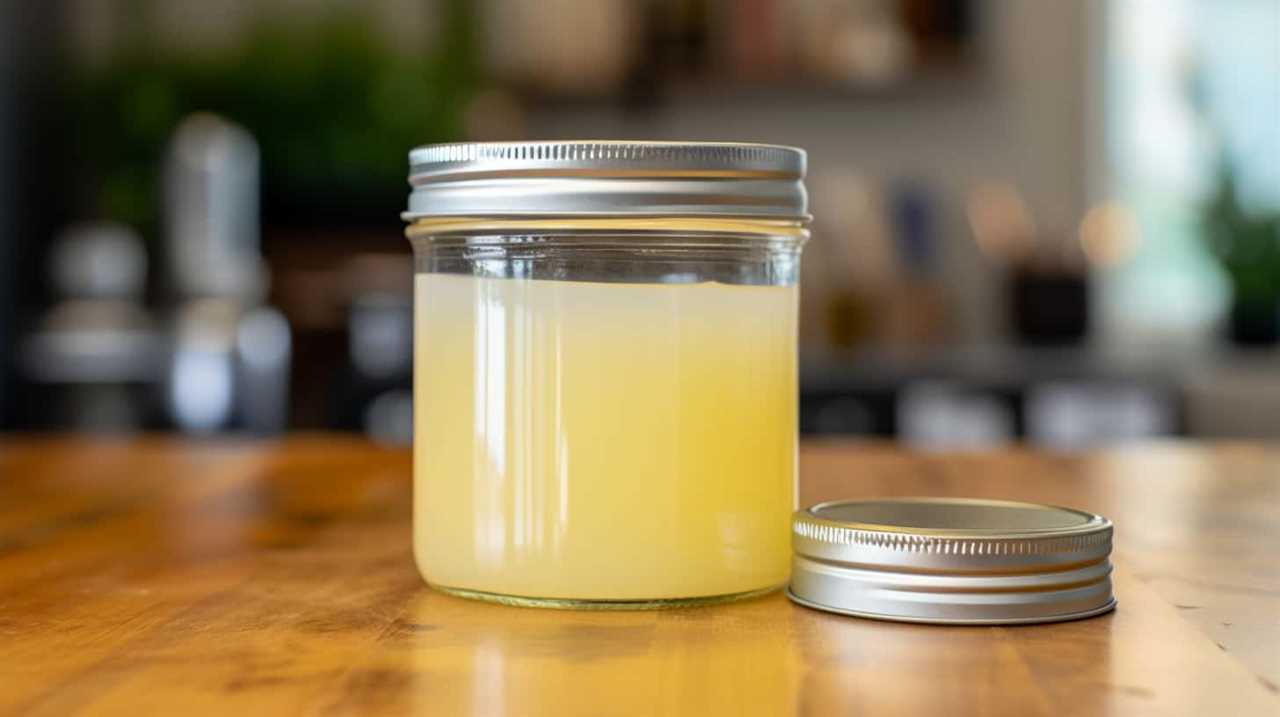
- Wax Type: Different types of wax have different melting points, which affects the pouring temperature. Soy wax, for example, has a lower melting point compared to beeswax.
- Fragrance Load: Adding fragrance oils to the wax can impact its consistency. Higher fragrance loads can increase the pouring temperature, while lower fragrance loads may require a lower pouring temperature.
- Dye or Color Additives: The addition of color additives can affect the pouring temperature. Some dyes may require a higher temperature to achieve the desired color intensity.
- Container Material: The material of the candle container can influence the rate at which the wax cools. Glass containers, for instance, retain heat longer than metal containers, which can affect the pouring temperature.
- Desired Texture: The desired texture of the finished candle can also impact the pouring temperature. Smooth, glossy candles may require a higher temperature, while textured or rustic candles may need a lower temperature.
Testing Wax Consistency
When testing wax consistency, there are several key points to consider.
First, the wax melting temperature is crucial as it determines how easily the wax will melt and pour.
Secondly, variations in setting time can affect the final texture of the candle, so it’s important to test different pouring temperatures to achieve the desired results.
Lastly, understanding the desired texture results will help determine the ideal consistency for the wax before pouring.

Wax Melting Temperature
We determine the wax melting temperature to ensure the consistency of the wax before pouring it for candle making. The ideal temperature for melting wax depends on the type of wax being used. Here are some key points to consider when testing wax consistency:
- Type of Wax: Different waxes have different melting points. It’s important to know the melting temperature range for the specific wax you’re using.
- Pouring Techniques: The pouring technique can also affect the consistency of the wax. It’s crucial to pour the melted wax at the right temperature to achieve the desired outcome.
- Thermometer: Using a reliable thermometer is essential for accurately measuring the wax temperature.
- Heat Source: The heat source used for melting the wax can impact the melting temperature. It’s important to use a consistent and controlled heat source.
- Testing: Conducting a small test batch before pouring larger quantities can help determine if the wax is melting at the desired temperature.
By understanding and controlling the wax melting temperature, we can ensure consistent results in our candle making process.
Now, let’s delve into the next section, which discusses setting time variations.
Setting Time Variations
After determining the wax melting temperature, our focus now shifts to testing wax consistency through setting time variations. Testing the ideal pouring time is crucial to ensure that your candles set properly and avoid any troubleshooting pouring issues.
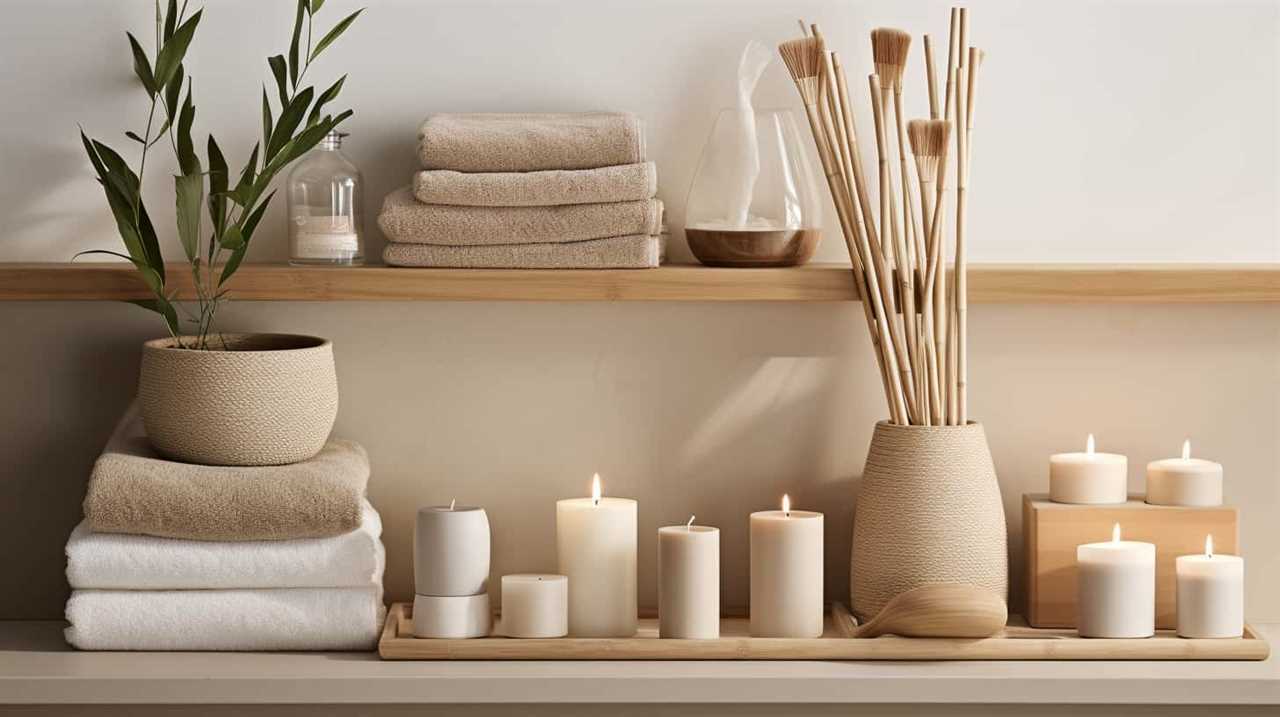
The setting time of the wax can vary depending on several factors such as the type of wax used, the container size, and the ambient temperature. To determine the ideal pouring time, it’s recommended to conduct small test batches using different pouring times and observe the results.
Pay close attention to how the wax sets and any issues that may arise, such as uneven cooling or sinkholes. By carefully testing and adjusting the pouring time, you can achieve consistent and high-quality candle results.
Desired Texture Results
To achieve the desired texture results and test the consistency of the wax, we recommend experimenting with different pouring techniques. Here are some testing methods and troubleshooting tips to help you achieve the perfect texture for your candles:
- Temperature Testing: Start by pouring the wax at different temperatures to determine the ideal pouring temperature for your desired texture. This will help you avoid issues such as cracking or uneven surfaces.
- Adding Additives: Try adding different additives, such as stearic acid or microcrystalline wax, to alter the texture of the candle wax. These additives can help improve hardness, gloss, and smoothness.
- Cooling Time: Allow the candles to cool for different lengths of time to see how it affects the texture. Longer cooling times can result in a smoother finish, while shorter cooling times may create a more rustic look.
- Pouring Techniques: Experiment with various pouring techniques, such as slow and steady pouring or pouring from different heights. This can affect the texture and appearance of the finished candle.
- Testing Different Waxes: If you’re not satisfied with the texture of your current wax, consider trying different waxes. Some waxes have different melting points and properties that can result in varying textures.
Incorporating Fragrance Into Wax
Sometimes, we add fragrance to the wax when pouring candles. Incorporating oils into the wax is a crucial step in creating beautifully scented candles.
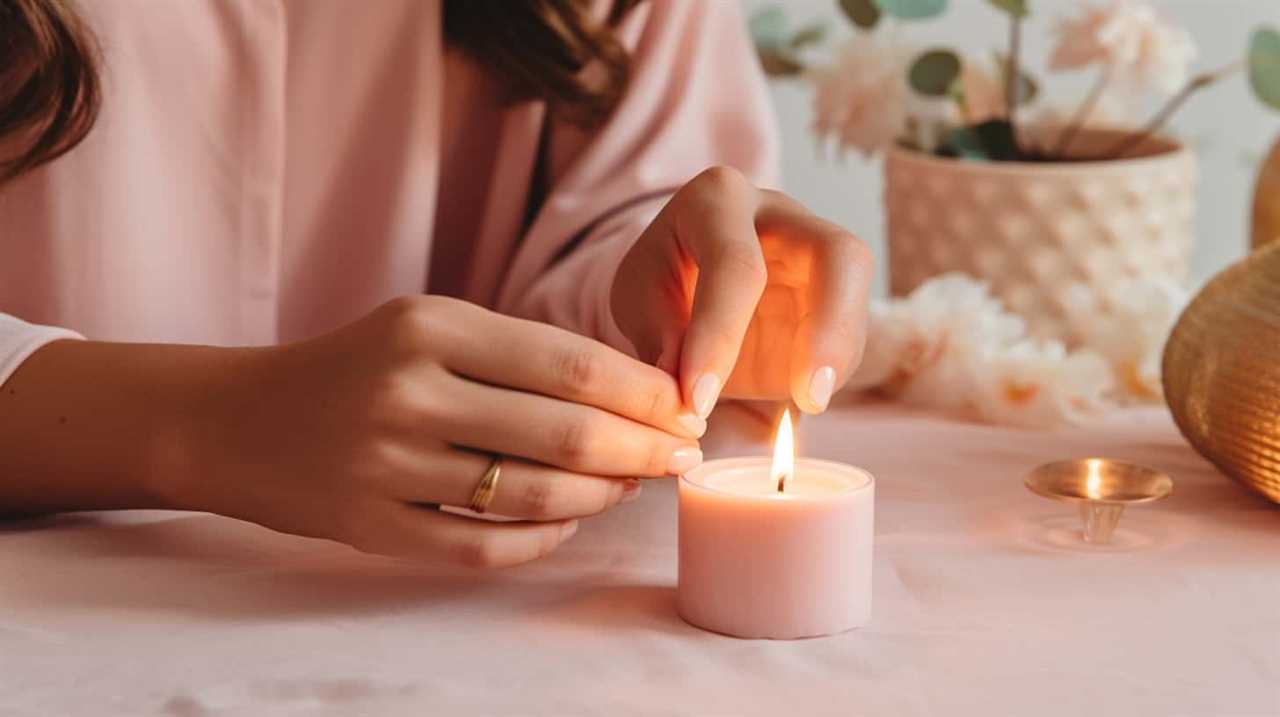
When it comes to fragrance blending techniques, there are several options to consider. One method is to use pre-blended fragrance oils, which are ready-made combinations of different scents. These oils are convenient and easy to use, especially for beginners.
Another option is to create custom blends by combining different fragrance oils together. This allows for a more personalized and unique scent profile. When blending fragrances, it’s important to consider the scent strength and compatibility of the oils. Experimenting with different ratios and combinations will help achieve the desired fragrance intensity.
Best Time to Add Fragrance
When incorporating fragrance into wax for candle making, we carefully consider the best time to add the scent to ensure optimal aroma diffusion. Properly timing the addition of fragrance is crucial in achieving a well-balanced and long-lasting scent in your candles.
Here are some factors to consider when deciding the best time to add fragrance:
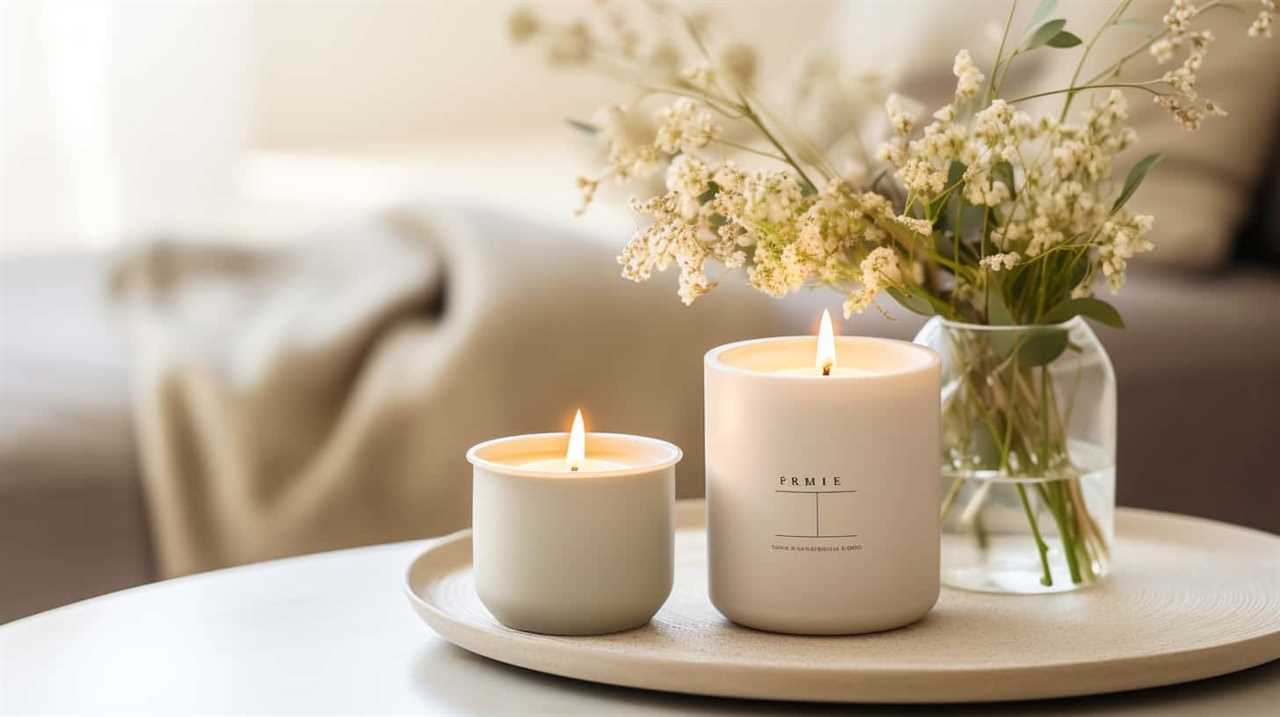
- Incorporating essential oils: Essential oils are highly concentrated and can be sensitive to heat. It’s recommended to add essential oils at a lower temperature, around 125°F, to preserve their therapeutic properties.
- Choosing fragrance oils: Fragrance oils are synthetic oils specifically formulated for candle making. They’re more heat-resistant and can be added at a higher temperature, typically around 185°F.
- Wax cooling rate: Adding fragrance too early in the cooling process can cause it to evaporate quickly, resulting in a weaker scent. It’s best to wait until the wax has cooled to around 140°F before adding fragrance.
- Stirring or blending: To ensure proper distribution of the fragrance, gently stir or blend the wax after adding the scent. This will help evenly distribute the fragrance throughout the candle.
- Testing and adjusting: It’s always recommended to test the scent strength before pouring your candles. If the fragrance is too weak, you can add a little more to achieve the desired scent.
Types of Wax for Pouring
When it comes to candle making, choosing the right type of wax is crucial.
Two popular options are soy and paraffin wax. Soy wax is derived from soybean oil and is known for its clean burn and eco-friendly properties.
On the other hand, paraffin wax is petroleum-based and offers a longer burn time.
Another option to consider is beeswax, which not only produces a beautiful, natural scent but also has air-purifying qualities.
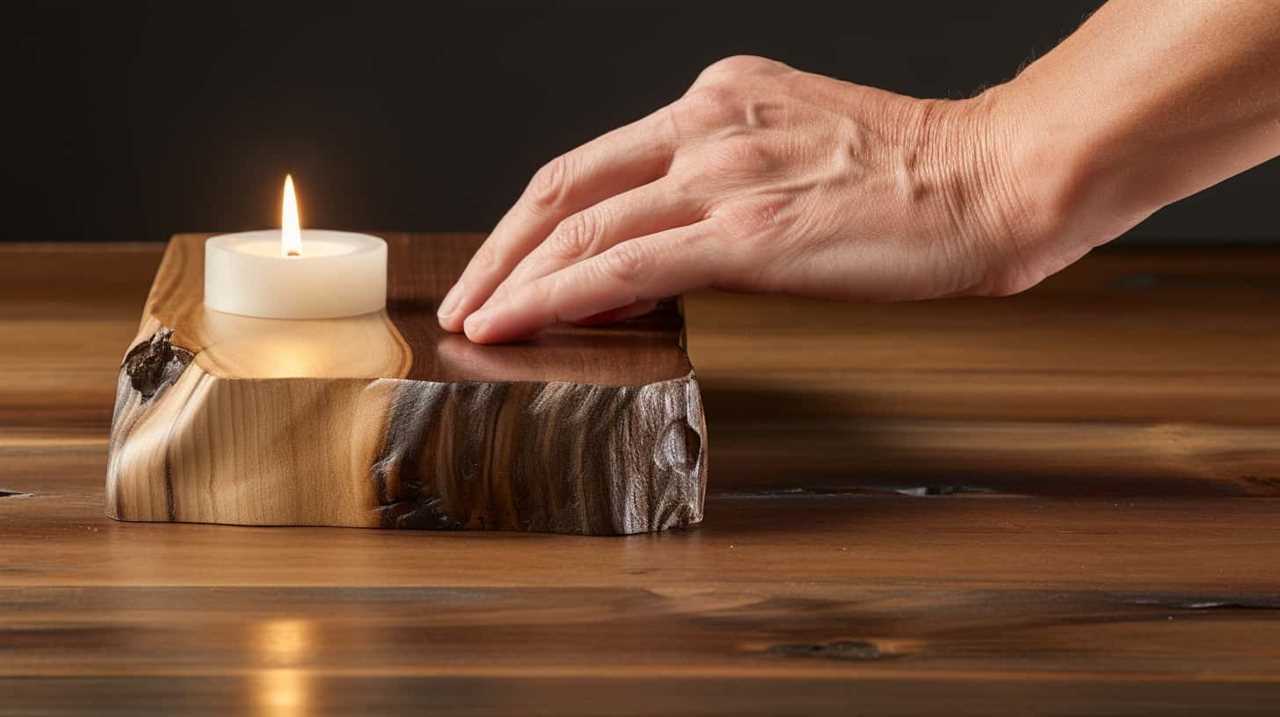
Lastly, palm wax is a sustainable choice that creates unique, marbled effects in candles.
Soy Vs. Paraffin
We prefer using soy wax over paraffin for pouring candles. Soy wax is a natural and renewable resource, making it a more sustainable choice. Here are some key reasons why soy wax is ideal for candle pouring:
- Lower melting point: Soy wax has a lower melting point than paraffin, which means it can be poured at a lower temperature, reducing the risk of overheating and potential damage to the fragrance or color of the candle.
- Cleaner burn: Soy wax burns cleaner than paraffin, producing less soot and toxins. This makes soy candles a healthier option for both you and the environment.
- Longer burn time: Soy candles tend to have a longer burn time compared to paraffin candles of the same size, providing you with more hours of enjoyment.
- Better scent throw: Soy wax has superior scent throw, meaning it carries and releases fragrance more effectively, resulting in a stronger and longer-lasting scent experience.
- Versatility: Soy wax is compatible with a wide range of fragrances and essential oils, allowing for endless possibilities in creating unique and personalized candles.
With all these benefits, it’s clear why we prefer using soy wax for pouring candles.
Now, let’s move on to discuss the benefits of using beeswax.

Beeswax Benefits
To further explore the benefits of different types of wax for pouring candles, let’s delve into the advantages of using beeswax. Beeswax is a popular choice among candle makers due to its numerous benefits. It is a natural wax produced by bees and offers several advantages over other types of wax.
| Benefits of Using Beeswax | |
|---|---|
| 1. Natural and Sustainable | Beeswax is a renewable resource that is obtained from beeswax combs. It is a more environmentally-friendly option compared to paraffin wax, which is derived from petroleum. |
| 2. Clean and Non-Toxic | Beeswax candles produce very little soot or smoke when burned, making them ideal for people with respiratory sensitivities. They also do not release harmful toxins or chemicals into the air. |
| 3. Long Burn Time | Beeswax candles burn slower and last longer than other types of candles. This means you can enjoy the warm glow and pleasant fragrance of beeswax candles for an extended period. |
| 4. Natural Honey Scent | Beeswax has a natural, subtle honey scent that adds a touch of warmth and coziness to any space. It creates a soothing and inviting ambiance when lit. |
These benefits make beeswax an excellent choice for candle pouring. However, if you’re looking for beeswax alternatives, soy wax and coconut wax are also popular options that offer their own unique advantages.
Choosing Palm Wax
The benefits of using palm wax for pouring candles are worth considering. Palm wax is a popular choice among candle makers due to its unique properties and advantages. Here are some reasons why palm wax is a great option:
- Sustainable: Palm wax is derived from the palm tree, which is a renewable resource.
- Clean Burning: Palm wax has a low soot and smoke production, resulting in cleaner air quality.
- Long Burn Time: Candles made from palm wax tend to burn longer compared to other types of wax.
- Excellent Scent Throw: Palm wax has the ability to hold and release fragrance effectively, resulting in a strong and long-lasting scent.
- Versatile: Palm wax can be easily colored and molded into various shapes and sizes.
While palm wax has its advantages, it’s also good to explore palm wax alternatives to find the best fit for your candle pouring needs.
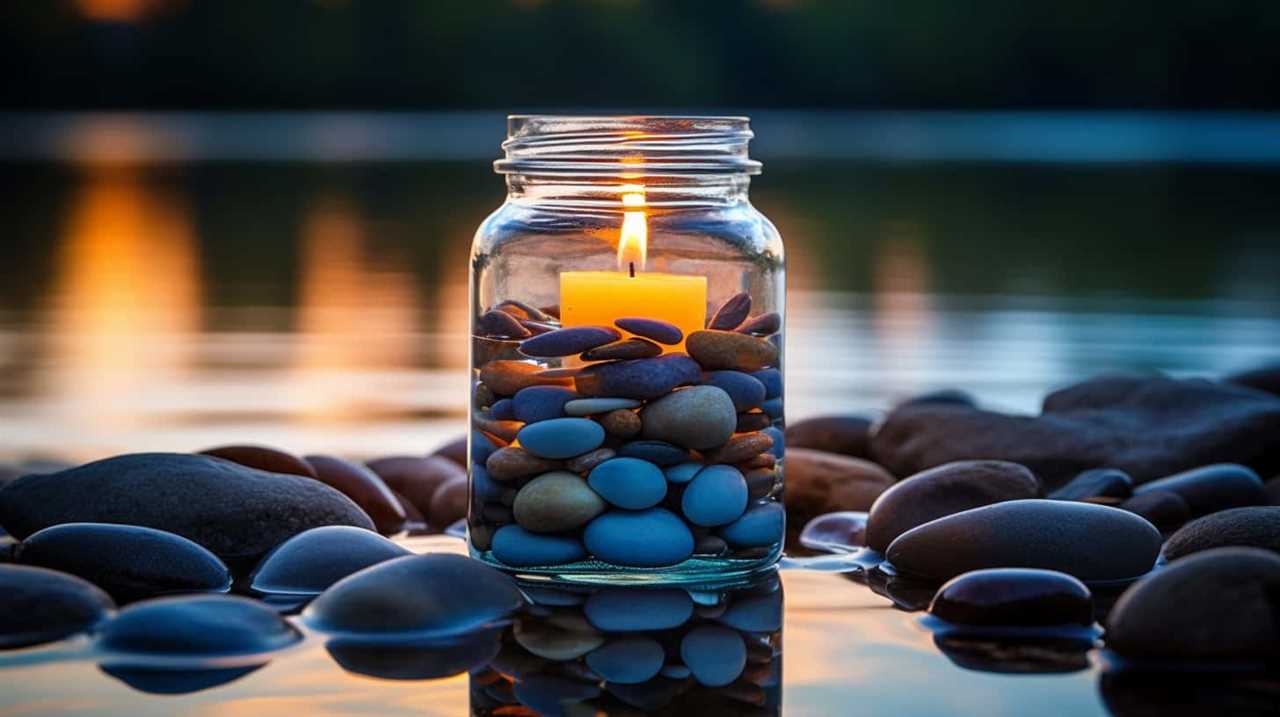
Choosing the Right Wax
Selecting the appropriate wax is crucial when pouring candle wax. The type of wax you choose will affect the quality, burn time, and overall performance of your candles. There are several factors to consider when choosing the right wax, such as the ideal pouring temperature and the significance of melting point.
The ideal pouring temperature refers to the temperature at which the wax should be poured into the candle container. This temperature ensures that the wax adheres properly to the container and minimizes the risk of surface imperfections or cracking. Different waxes have different ideal pouring temperatures, so it is important to follow the manufacturer’s guidelines.
The melting point significance refers to the temperature at which the wax melts completely. This affects the burn time of the candle. A higher melting point wax will burn slower, resulting in a longer-lasting candle, while a lower melting point wax will burn faster.
In order to help you make an informed decision, here is a table comparing different types of candle waxes:
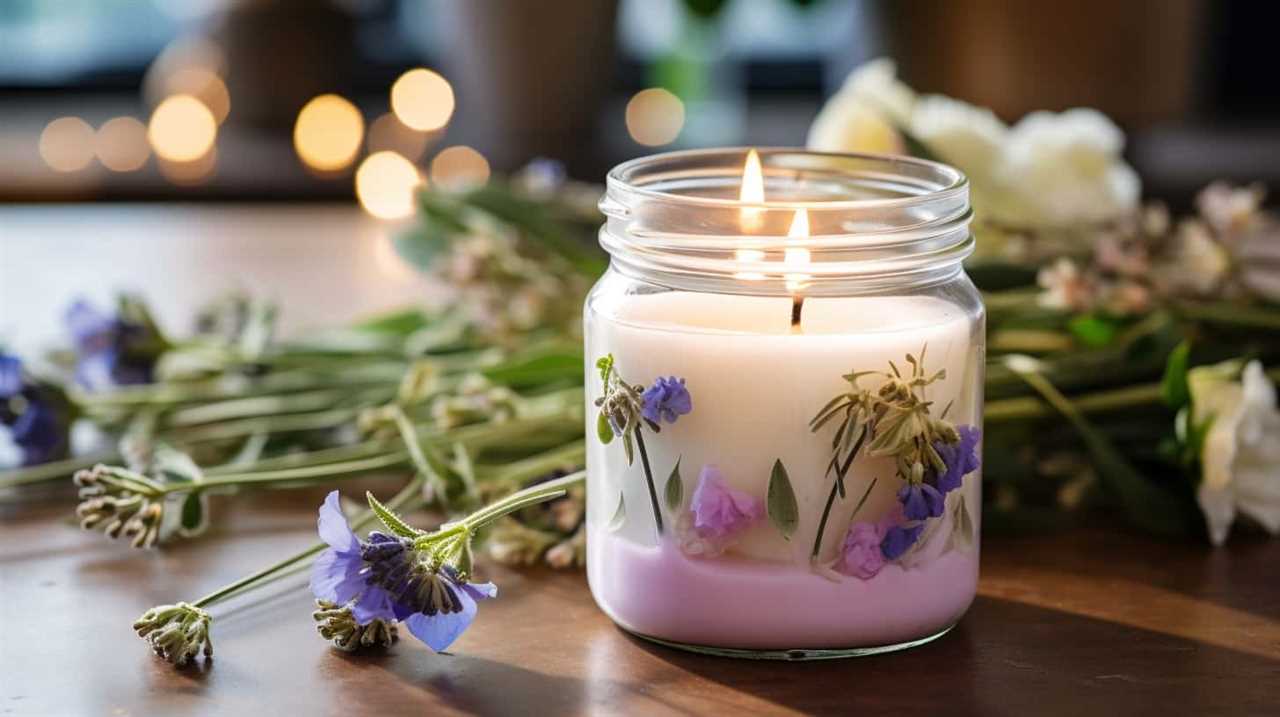
| Wax Type | Ideal Pouring Temperature | Melting Point |
|---|---|---|
| Soy Wax | 110-125°F | 120-180°F |
| Beeswax | 145-175°F | 144-147°F |
| Paraffin Wax | 160-180°F | 130-150°F |
| Coconut Wax | 120-130°F | 120-150°F |
| Palm Wax | 175-185°F | 140-160°F |
Preparing the Wax for Pouring
For preparing the wax to be poured, we gather the necessary materials and equipment. Here are the steps to follow:
- Wax: Choose the appropriate wax for your candle, considering factors such as fragrance load and burn time.
- Double Boiler: Set up a double boiler to melt the wax gently and evenly, using a heat-resistant container for the wax.
- Thermometer: Use a thermometer to monitor the wax temperature. The ideal pouring temperature varies depending on the type of wax being used.
- Stirring Tools: Have stirring tools, such as a heat-resistant spoon or whisk, ready to mix in any additives or fragrance oils.
- Consistency Test: Before pouring, perform a consistency test by dipping a spoon into the melted wax and observing how it drips off. The wax should be smooth and flow easily.
Tips for Successful Pouring
To ensure a successful pour, we recommend checking the consistency of the melted wax before proceeding with the candle-making process. Testing the fragrance is an important step to ensure that the scent is at its desired strength.
Simply pour a small amount of the melted wax into a heat-safe container and add the fragrance oil according to the recommended percentage. Mix well and let it cool. If the scent is too weak, add more fragrance oil. If it’s too strong, dilute it with some additional melted wax.
Once you’re satisfied with the fragrance, it’s time to focus on pouring techniques. Make sure to pour the wax slowly and steadily to avoid any air bubbles. Start pouring from the center and move towards the edges of the container in a circular motion. This helps to ensure an even distribution of the wax and a smooth finish. Remember to pour at the recommended temperature for the specific type of wax you’re using.
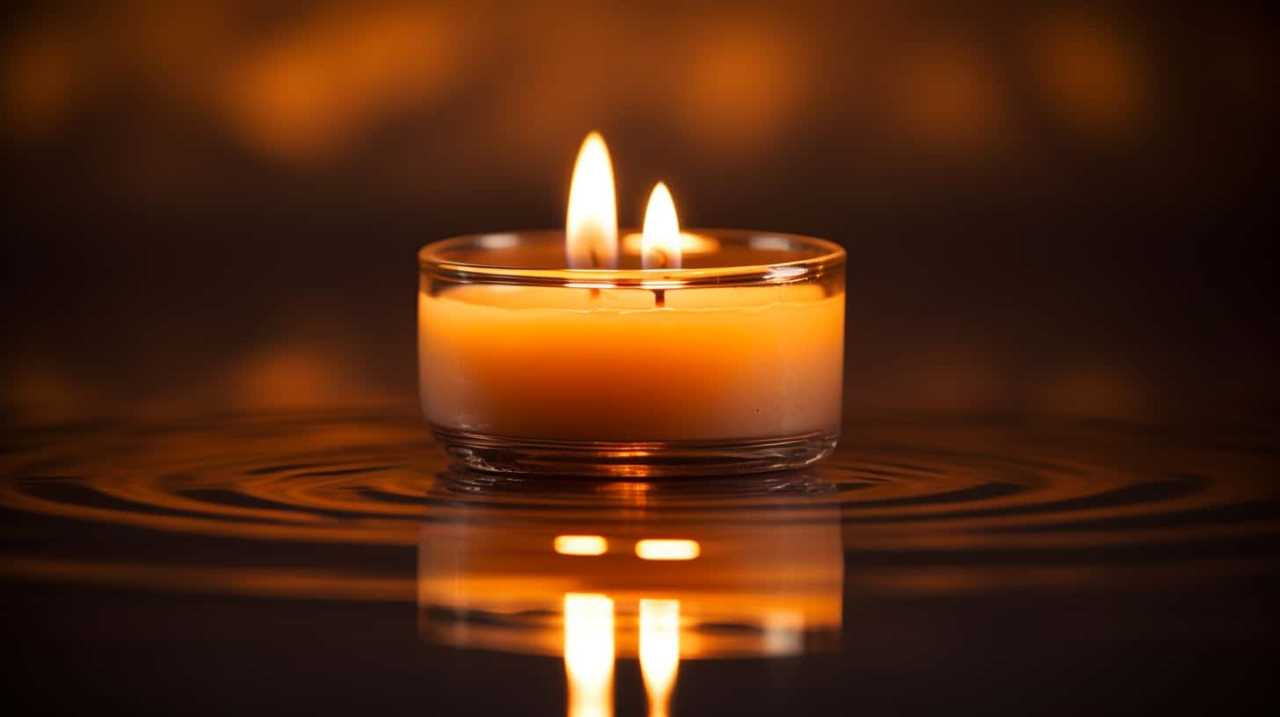
Frequently Asked Questions
Can I Pour Candle Wax at Any Temperature?
We can pour candle wax at any temperature, but ideal pouring conditions depend on the type of wax. Proper temperature ensures even distribution and proper adhesion. Optimal conditions vary, so research and experimentation are key.
How Long Should I Wait for the Wax to Cool Before Pouring?
We’ve learned that testing wax consistency and using a thermometer are essential. It’s important to wait until the wax cools to the perfect temperature before pouring, ensuring a successful candle-making experience.
Is It Necessary to Test the Consistency of the Wax Before Pouring?
Testing wax consistency is crucial before pouring. It ensures the right texture for optimal burning and fragrance release. We highly recommend conducting a simple test to achieve excellent results and avoid wasting time and resources.
Can I Mix Different Fragrances Into the Wax?
Yes, we can mix different fragrances into the wax. However, it’s crucial to choose the right wax temperature for optimal blending. Experiment with different combinations to create unique and delightful scents.
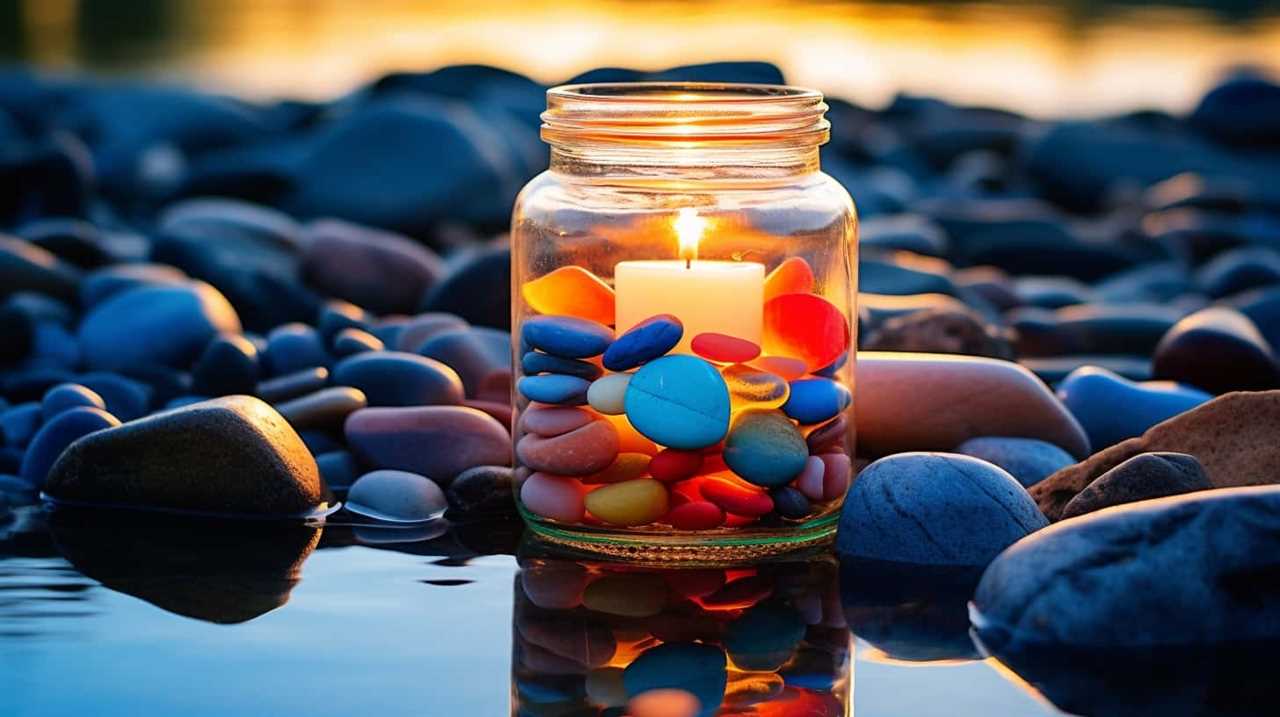
What Are Some Common Mistakes to Avoid When Pouring Candle Wax?
To ensure successful candle pouring, we must avoid common mistakes. Some tips include using a double boiler, monitoring the temperature, and pouring at the right time. These techniques will help achieve mastery in candle-making.
Conclusion
In conclusion, knowing the ideal temperature for pouring candle wax is crucial for successful candle making. By considering factors such as the type of wax, fragrance incorporation, and testing wax consistency, one can achieve excellent results.
Choosing the right wax and properly preparing it for pouring are also essential steps.
With these tips and techniques, you can ensure a smooth and successful candle pouring process.
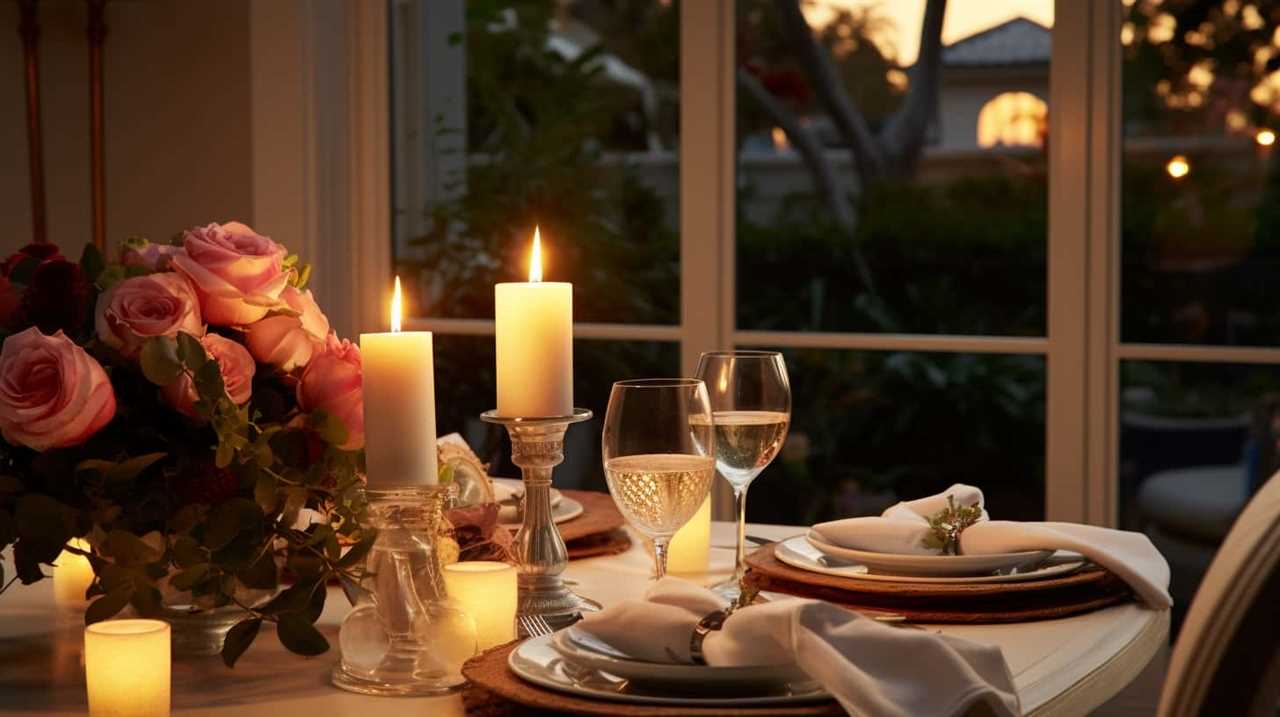
Happy candle making!









